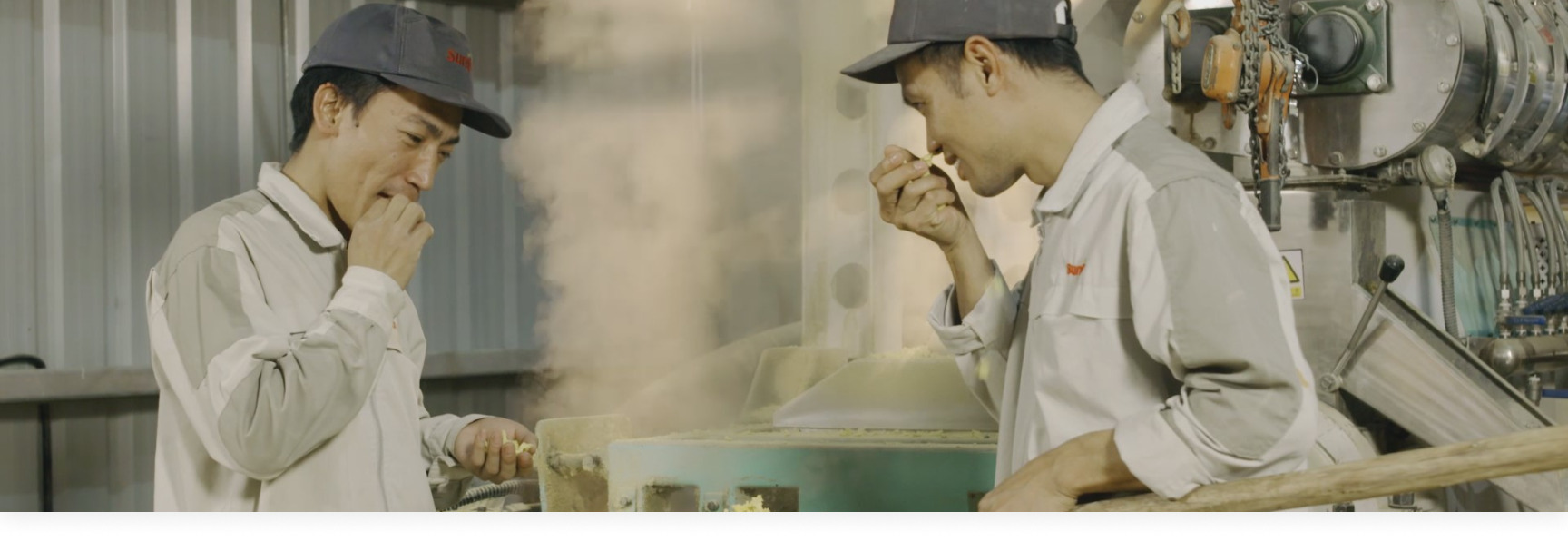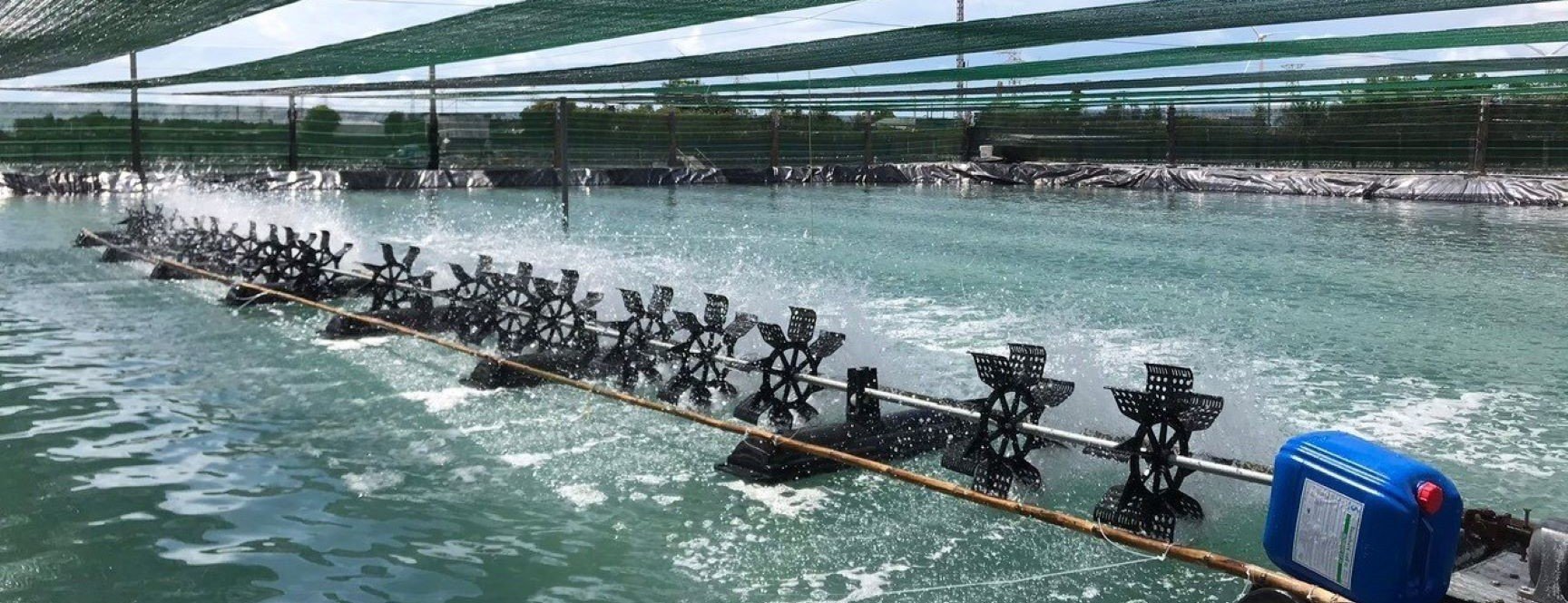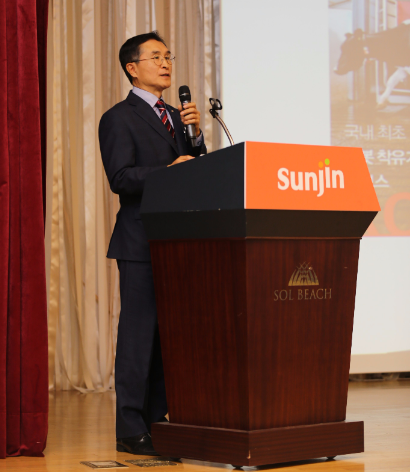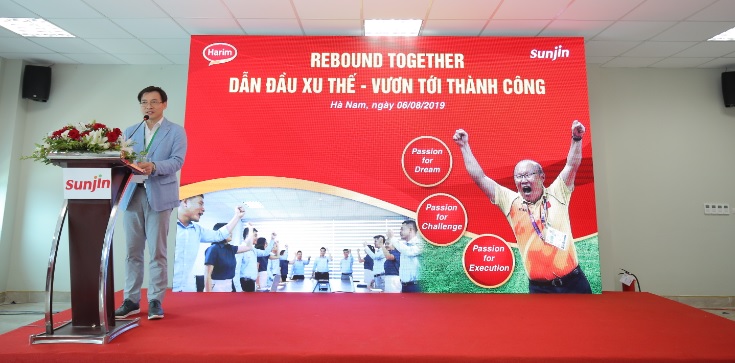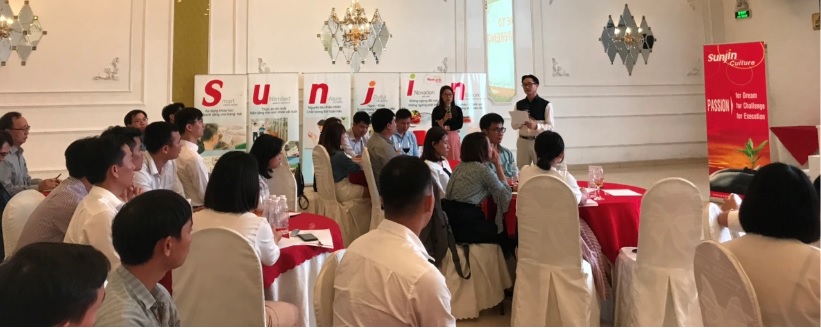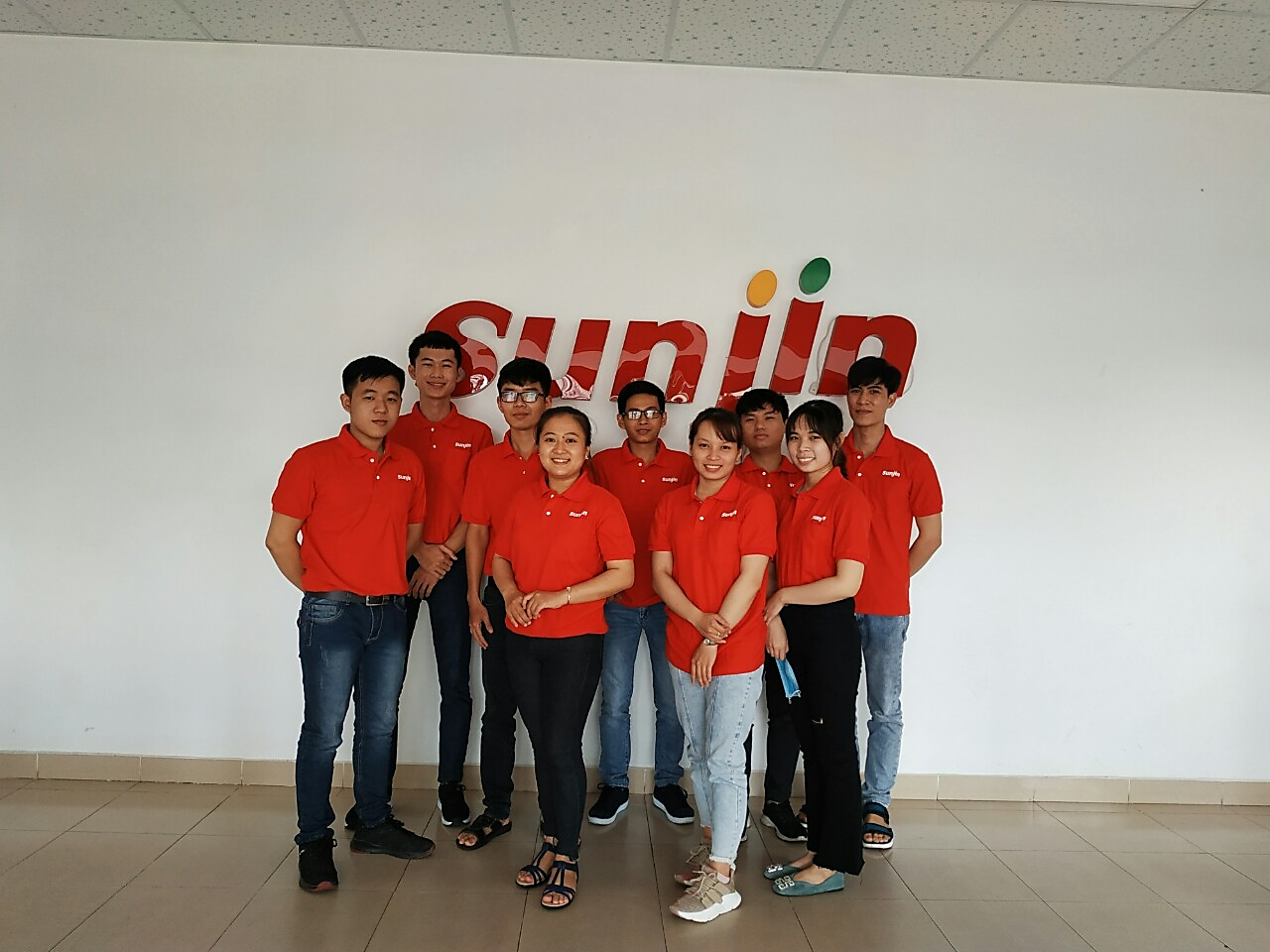No. E08 – 08/2021
NEWS OF SUNJIN
No. E08 – 08/2021
Challenges of the industry Vietnamese shrimp in the context of the epidemic
Source: Sunjin – Aqua Marketing
Vietnam shrimp export value in 2020 – 2021
Shrimp export value in July decreased by 3.7% over the same period last year. The cumulative total up to July was $2.1 million, up 11% over the same period last year.
Source: Sunjin – Aqua Marketing
Vietnam’s farmed shrimp production in 2020 – 2021
Total shrimp harvest in July was 110 thousand tons, up 1% over the same period but down 5% compared to the previous month. Total shrimp production in the first 7 months of the year reached 481 thousand tons, up 12% over the same period. In which, white-leg shrimp accounted for more than 65%, black tiger shrimp accounted for more than 30%, the rest were other shrimp species.
In July, both export value and shrimp harvest decreased. This is a common problem of our country’s economy at the moment because it has to face many challenges in the context of the epidemic. Right after the disease broke out again, the Government issued Directive 16 to prevent Covid, Vietnamese shrimp had to face difficulties at home and abroad. In the international arena, the US-China war has not yet ended and the instability in the Middle East region, the outbreak of the disease has returned, although not serious in some areas, also caused many difficulties. In the country, right after the social distancing measures were applied, shrimp prices also began to decrease, along with a series of difficulties in all stages from farming to processing and exporting shrimp. Farmers are worried when the price of shrimp keeps decreasing day by day due to difficulties in transportation, finding traders to buy shrimp.. or harvesting while collecting shrimp requires a large concentration of people. Traders cannot buy shrimp or buy only a very small amount because they cannot find output because many wholesale markets and chain of food service shops have stopped operating. Enterprises producing industrial and processed food for export have to face many difficulties in conducting “3 on the spot” when they have to reduce the number of employees to ensure the distance. Many businesses face difficulties when they cannot convince workers to stay in factories, so they have to reduce factory capacity or suspend operations. Some processing enterprises said that “due to insufficient workers, many products cannot be produced or delivered to partners, workers are demanding to return because they cannot stand the bondage. Moreover, the number of employees who stay is gathered from many stages, so they are not specialized, leading to lower labor productivity than usual, and the quantity of shrimp purchased decreases. Meanwhile, all expenses such as accommodation, living expenses, compensation for epidemic prevention and control costs, etc. have increased sharply. Mr. Nguyen Dang Khoa, General Director of Thai Hoa Food Joint Stock Company, said: “Due to the distance regulation, it is also very difficult to travel and harvest shrimp because it is not possible to find people to collect shrimp, but if you can find it when you go through In other areas, negative test results are also required, increasing purchasing costs, so many traders are afraid of losses. The hardest part is the small farming households, the output is low, it is difficult to find traders during the harvest period because the profits are not enough to cover the costs” (Source: Vietnam Fisheries Magazine).
In general, these difficulties are all from the application of the distancing directives. As long as the directives are lifted and life is restored to normal, shrimp prices will also recover. In particular, the price of shrimp is likely to increase sharply, because currently the amount of shrimp purchased by processing enterprises is low, after the operation is restored, the amount of raw shrimp is no longer enough to promote purchasing, in addition to the occasion. The end of the year is the festive season, so domestic demand will also increase sharply. However, at a time when the epidemic is complicated like the present, compliance with social distancing regulations is absolutely necessary to protect the health of each of us and our families. At the same time, compliance with the regulations on Covid-19 prevention will also contribute to bringing life back to normal.
Technical section – Acute hepatopancreatic necrosis disease in farmed shrimp
Early Mortality Syndrome (EMS) or Acute Hepatopancreatic Necrosis Disease (AHPND) is usually detected in shrimp culture about 20-30 days after stocking. EMS/AHPND seriously threatens the shrimp farming industry in Asia (including China (2009), Vietnam (2010), Malaysia (2011), Thailand (2012) and the Philippines (2015)) and some other countries in the world such as Mexico (2014). The mortality rate of shrimp due to infection can be up to 90% in vannamei and black tiger shrimp and has caused significant economic losses to shrimp farmers.
In Vietnam, EMS/AHPND disease was detected in black tiger shrimp (Penaeus monodon) and white leg shrimp (Penaeus vannamei) in shrimp farming areas across the country with the same pathology to the hepatopancreas of shrimp.
1. Pathogens
Vibrio parahaemolyticus with Photorhabdus insect-related toxin (PirA and PirB) located in the plasmid is believed to be the main causative agent of EMS/AHPND disease in shrimp (Loc Tran et al., 2013; Yang et al., 2014; Lee et al. , 2015). Vibrio parahaemolyticus is a Gram-negative, short rod, motile, oxidase and catalase positive, that ferment sugars under aerobic and anaerobic conditions. Vibrio parahaemolyticus is tolerant to salinity, temperature and easily attaches to plankton moving with currents. V. parahaemolyticus is transmitted orally and then colonizes the digestive system of shrimp, producing a toxin that causes structural destruction of hepatopancreas tissue (Loc Tran et al., 2013). However, some recent studies show that some other Vibrio species such as V. vulnificus, V. fluvialis, V. cholerae and V. alginolyticus are also involved in the occurrence of EMS/AHPND.
Research by Dr. Lightner (2012) showed that the strain of bacteria V. parahaemolyticus causing disease in shrimp did not contain toxins that cause human disease. This means that this bacteria does not affect the health of consumers.
Virulent V. parahaemolyticus isolated on Chromagar Vibrio medium from shrimp expressing EMS/AHPND in Tran De, Soc Trang
2. Signs of illness
– Sick shrimp shows signs of lethargy, refuses to eat
– Hepatopancreas atrophy and pale in color
– Empty intestines and soft shell phenomenon
– Shrimp can die within 2-3 days after infection
Shrimp have pale liver expression. The test results showed the presence of virulent V. parahaemolyticus bacteria causing EMS/AHPND
3. Controlling AHPND in shrimp
To control disease on shrimp, farmers have used antibiotics with different concentrations. However, up to this point, the effectiveness of using antibiotics in the treatment of shrimp diseases is still not high. The widespread and long-term use of antibiotics leads to antibiotic resistance in bacteria. Most antibiotics will be mixed into the feed, then this antibiotic will exist in the body of farmed shrimp as well as shrimp processed products, which will affect the health of consumers. In addition, antibiotic residues in excess of regulated levels will affect production and export, causing considerable economic losses.
Some sustainable and biosecurity measures to control EMS/AHPND disease in shrimp ponds are as follows:
– Sử dụng tôm giống sạch bệnh, có sức đề kháng cao.
– Xử lý nguồn nước nuôi tôm triệt để, tránh sự lây nhiễm mầm bệnh từ bên ngoài vào khu nuôi tôm.
– Hạn chế sự phát triển quá mức của tảo trong ao nuôi nhằm tránh sự biến động pH trong ngày quá cao cũng như sự nguy hiểm khi tảo trong ao chết hàng loạt.
– Kiểm soát lượng thức ăn trong ngày, tránh tình trạng cho ăn dư thừa dẫn đến ô nhiễm môi trường nước ao nuôi.
– Kiểm soát các khí độc như NH3, NO2 trong môi trường nước vì một số nghiên cứu cho thấy sự phát triển của các vi khuẩn Vibrio có sự tương quan thuận với hàm lượng khí độc trong ao nuôi tôm.
– Thường xuyên kiểm tra mật độ vi khuẩn Vibrio trong môi trường nước ao nuôi, không để mật độ vi khuẩn Vibrio vượt quá 103 cfu/mL.
– Hạn chế sử dụng kháng sinh trong việc phòng bệnh vì kháng sinh có thể tiêu diệt cả các loại vi khuẩn có lợi khác trong ao và dẫn đến sự kháng sinh trên vi khuẩn gây bệnh.
– Ứng dụng chế phẩm sinh học nhóm Bacillus, Lactobacillus trong nuôi tôm. Quá trình khống chế sinh học là những dòng vi khuẩn có ích để lấn át, kìm chế, và có tác động đối kháng lên dòng vi khuẩn có hại. Bên cạnh đó, khi vi khuẩn có lợi phát triển với số lượng lớn trong đường ruột sẽ giúp tôm tiêu hóa thức ăn hiệu quả hơn, lấn át hoặc tiêu diệt vi khuẩn có hại cho đường ruột, giúp ổn định hệ vi sinh vật đường ruột, làm tăng các vi khuẩn có ích (các vi khuẩn sản sinh vitamin, chất kháng khuẩn, vi khuẩn phân giải đường bột…), làm giảm các vi khuẩn có hại (các vi khuẩn cạnh tranh thức ăn, sinh chất độc…). Trong nuôi thủy sản, chế phẩm sinh học còn là sản phẩm xử lý môi trường, giúp cho môi trường ao nuôi thuận lợi cho sự phát triển của tôm.
– Ngoài ra, có thể sử dụng một số sản phẩm có chứa acid hữu cơ, tinh dầu… ngay từ đầu vụ và thường xuyên để tăng cường sức đề kháng cho tôm và ức chế sự phát triển của các vi khuẩn gây bệnh.
Tag
Related news
14 month 05 2023
Leading the trend – Reaching for success
14 month 05 2023
Meaningful Internship at SUNJIN
14 month 05 2023
Fisheries-Newsletter No. 04-07/2020
14 month 05 2023

